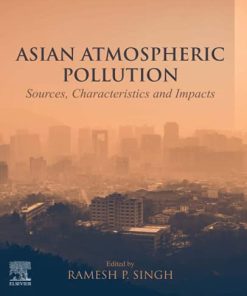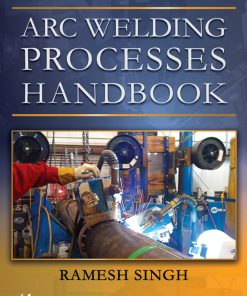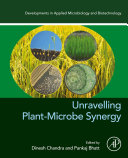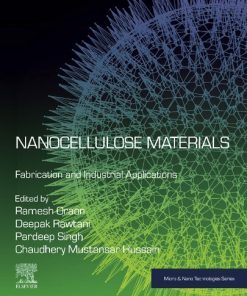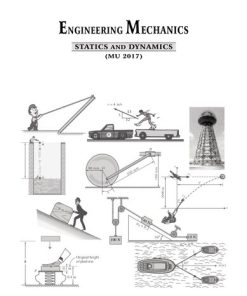Rhizosphere Engineering 1st edition by Ramesh Chandra Dubey 0323885959 9780323885959
$50.00 Original price was: $50.00.$25.00Current price is: $25.00.
Rhizosphere Engineering 1st edition by Ramesh Chandra Dubey – Ebook PDF Instant Download/DeliveryISBN: 0323885959, 9780323885959
Full download Rhizosphere Engineering 1st edition after payment.
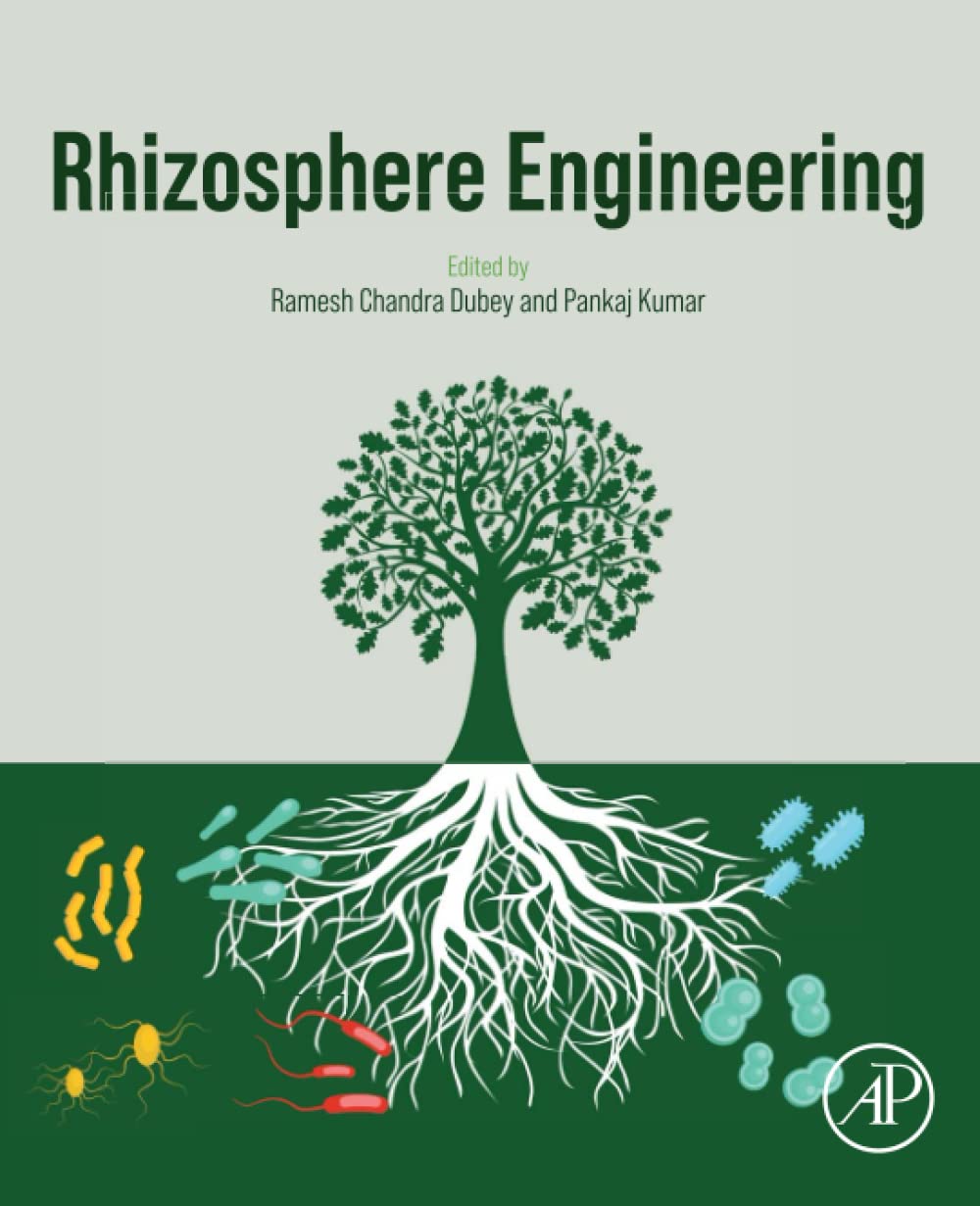
Product details:
ISBN-10 : 0323885959
ISBN-13 : 9780323885959
Author : Ramesh Chandra Dubey
Rhizosphere Engineering is a guide to applying environmentally sound agronomic practices to improve crop yield while also protecting soil resources. Focusing on the potential and positive impacts of appropriate practices, the book includes the use of beneficial microbes, nanotechnology and metagenomics. Developing and applying techniques that not only enhance yield, but also restore the quality of soil and water using beneficial microbes such as Bacillus, Pseudomonas, vesicular-arbuscular mycorrhiza (VAM) fungi and others are covered, along with new information on utilizing nanotechnology, quorum sensing and other technologies to further advance the science.
Rhizosphere Engineering 1st Table of contents:
Chapter 1: Plant growth promotion by rhizosphere dwelling microbes
Abstract
1.1: Introduction
1.2: Plant growth promoting rhizobacteria (PGPR)
1.3: Plant growth-promoting fungi (PGPF)
1.4: Plant growth-promoting protozoa
1.5: Conclusions
References
Chapter 2: Indigenous nitrogen fixing microbes engineer rhizosphere and enhance nutrient availability and plant growth
Abstract
2.1: Introduction
2.2: Nitrogen-fixing microbes
2.3: Mechanism of biological nitrogen fixation
2.4: Rhizosphere engineering by N2-fixing microbes
2.5: Role of nitrogen-fixing microbes in plant growth enhancement and nutrient uptake
2.6: Nitrogen-fixing microbes as biofertilizer for sustainable agriculture
2.7: Conclusions
References
Chapter 3: Rhizospheric bacteria as soil health engineer promoting plant growth
Abstract
3.1: Introduction
3.2: Mechanisms involved in plant growth promotion by rhizobacteria
3.3: Stress tolerance in PGPR
3.4: Rhizosphere competence of PGPR
3.5: Effect of PGPR on plant growth
References
Chapter 4: Role of Bacillus species in soil fertility with reference to rhizosphere engineering
Abstract
Acknowledgment
4.1: Introduction
4.2: Characters and diversity of Bacillus species
4.3: Bioefficacy of B. subtilis
4.4: Induction of systemic resistance (ISR) by B. subtilis isolates for growth promotion
4.5: Peroxidise activity
4.6: Polyphenol oxidase activity
4.7: Phenylalanine ammonia-lyase activity
4.8: Formulation, shelf-life, and compatibility of B. subtilis with fungicides
4.9: Conclusions
References
Chapter 5: Rhizobium as soil health engineer
Abstract
5.1: Introduction
5.2: Classification and history of Rhizobium
5.3: Importance of Rhizobium in governing soil health and crop productivity
5.4: Factors affecting the Rhizobium in soil
5.5: Conclusion
References
Chapter 6: Azotobacter—A potential symbiotic rhizosphere engineer
Abstract
Acknowledgment
6.1: Introduction
6.2: Azotobacter—A beneficial bacterium
6.3: PGPR activities of Azotobacter
6.4: Impact of pesticides on soil ecosystem
6.5: Effect of pesticides on Azotobacter
6.6: Biodegradation of pesticides
6.7: Benefits of Azotobacter in agriculture
6.8: Conclusions
References
Chapter 7: Application of cyanobacteria in soil health and rhizospheric engineering
Abstract
7.1: Introduction
7.2: Cyanobacteria in the improvement of soil health
7.3: Cyanobacteria in rhizospheric engineering
7.4: Conclusions
References
Chapter 8: Bacterial inoculants for rhizosphere engineering: Applications, current aspects, and challenges
Abstract
8.1: Introduction
8.2: Microbes associated with plants
8.3: Rhizosphere engineering
8.4: Why microbial inoculants?
8.5: Microbial inoculants
8.6: Types of microbial inoculants
8.7: Bacterial biofertilizers
8.8: Applications of microbial inoculants
8.9: Challenges in bacterial inoculant application
8.10: Solutions to constraints
8.11: Conclusions
References
Chapter 9: Microbial inoculants in agriculture and its effects on plant microbiome
Abstract
9.1: Introduction
9.2: Plant microbiomes
9.3: Bioinoculants in agriculture
9.4: Direct effect of bioinoculant on plants
9.5: Effect of bioinoculants on the structure of the bacteriome with benefits for plants
9.6: How does the bioinoculants change the structure of the bacteriome?
9.7: Conclusion and future perspectives
References
Chapter 10: Arbuscular mycorrhiza—A health engineer for abiotic stress alleviation
Abstract
10.1: Introduction
10.2: Role of AM fungi in plant growth promotion
10.3: Salinity stress
10.4: Drought stress
10.5: Heavy metal (HM) stress
10.6: Conclusions
References
Chapter 11: Potassium solubilizing microorganisms as soil health engineers: An insight into molecular mechanism
Abstract
11.1: Introduction
11.2: Need of potassium solubilizing bacteria in K nutrition
11.3: Mechanism of potassium solubilization and mobilization
11.4: Characterization of potassium solubilizing bacteria
11.5: Determination of PGPR attributes of KSB strains
11.6: Hydrolytic enzymes
11.7: Molecular mechanisms of KSB in solubilizing K
11.8: Biology of potassium transporter genes in potassium solubilizing microorganisms
11.9: Conclusions and future perspectives
References
Chapter 12: Zinc solubilizing rhizobacteria as soil health engineer managing zinc deficiency in plants
Abstract
12.1: Introduction
12.2: Present status of soil fertility
12.3: Possible causes of Zn scarcity in crop plants
12.4: Possible Zn-deficient plant symptoms and effect of Zn deficiency on plant metabolism
12.5: Importance of Zn micronutrient in the plant system
12.6: Chemical fertilizer: Dilemma between necessity and sustainability
12.7: ZSB: The alternative way
12.8: Diversity of ZSB associated with plant
12.9: Mechanism of Zn solubilization by ZSB
12.10: Genetics of Zn solubilization and uptake
12.11: Prospect of ZSB in nanofertilizer
12.12: Conclusions
References
Chapter 13: Rhizosphere engineering through pesticides-degrading beneficial bacteria
Abstract
13.1: Introduction
13.2: Pesticides
13.3: Beneficial bacteria
13.4: Effect of pesticides on beneficial bacteria
13.5: Adverse effect of pesticides on humans
13.6: Mechanism of microbial degradation of pesticide
13.7: Engineering the rhizobia
13.8: Conclusions
References
Chapter 14: Enzymes in rhizosphere engineering
Abstract
14.1: Introduction
14.2: Soil indicators—A measurable parameter
14.3: Rhizozymes
14.4: Rhizozyme—Categorization based on location
14.5: Microbiome of rhizosphere
14.6: Conclusions
References
Chapter 15: Actinobacterial enzymes—An approach for engineering the rhizosphere microorganisms as plant growth promotors
Abstract
Acknowledgments
15.1: Introduction
15.2: Actinobacteria—Enzyme reservoirs
15.3: PGPR and actinobacterial communities in rhizosphere
15.4: Rhizosphere enzymes and its importance
15.5: Rhizosphere—Actinobacteria and carbon sequestration
15.6: Rhizosphere engineering
15.7: Conclusions
References
Chapter 16: Reactive oxygen species and oxidative stress in higher plants, and role of rhizosphere in soil remediation
Abstract
16.1: Introduction
16.2: Abiotic stresses
16.3: ROS formation under high light
16.4: Conclusions
References
Chapter 17: Nanotechnology for rhizosphere engineering
Abstract
17.1: Introduction
17.2: Rhizosphere engineering
17.3: Applications of nanotechnology for rhizosphere engineering
17.4: NPs for soil microbial community functioning and stress alleviation
17.5: Nanosensors for precision agriculture
17.6: Nanomaterials for rhizosphere remediation
17.7: Nanotechnology for plant modification
17.8: Nanotechnology for drought recovery and water conservation in rhizosphere
17.9: Nanotechnology for improving heat tolerance in plants
17.10: Conclusions
References
Chapter 18: Rhizospheric health management through nanofertilizers
Abstract
18.1: Introduction
18.2: Nanofertilizers
18.3: Demerits of nanoparticles for rhizosphere
18.4: Conclusions
References
Chapter 19: Quorum sensing in rhizosphere engineering
Abstract
19.1: Introduction
19.2: Plant rhizosphere as a hot spot for microbial activity
19.3: Plant growth-promoting rhizobacteria
19.4: Bacterial quorum sensing
19.5: Quorum sensing in plant growth-promoting rhizobacteria
19.6: Prospects for using QS mechanisms to improve plant growth and development
19.7: Conclusions
References
Chapter 20: Quorum sensing in rhizosphere microbiome: Minding some serious business
Abstract
Acknowledgments
20.1: Introduction
20.2: AHL-mediated intraspecies interaction in Gram-negative bacteria
20.3: Autoinducing peptides-mediated intraspecies interaction in Gram-positive bacteria
20.4: Bacterial quorum-sensing systems in rhizosphere
20.5: Conclusions
References
Chapter 21: Metagenomics for rhizosphere engineering
Abstract
21.1: Introduction
21.2: Key components of rhizosphere
21.3: Need for rhizosphere engineering
21.4: Metagenomics as a tool for rhizosphere engineering
21.5: Experimental strategies in metagenomics
21.6: Rhizosphere prospective of metagenomics
21.7: Challenges in rhizosphere engineering
21.8: Conclusions
References
Chapter 22: Rhizosphere engineering for crop improvement
Abstract
22.1: Introduction
22.2: Plant-microbe interaction
22.3: Understanding the science behind plant-microbe interaction
22.4: Approaches for rhizosphere engineering
22.5: Modern tools for plant engineering
22.6: Conclusions and future prospect
References
Chapter 23: Bacterial induced alleviation of cadmium and arsenic toxicity stress in plants: Mechanisms and future prospects
Abstract
Acknowledgment
23.1: Introduction
23.2: Plant-associated PGPB
23.3: Cd and As resistance mechanisms in PGPB
23.4: Mechanisms of decreased accumulation of Cd and As in plant tissues by PGPB
23.5: Mechanisms of palliation of Cd and As toxicity in plants by PGPB
23.6: Conclusions and future prospects
References
Chapter 24: Microbial community in soil-plant systems: Role in heavy metal(loid) detoxification and sustainable agriculture
Abstract
24.1: Introduction
24.2: Diversity in plant-microbe interface
24.3: Intercommunication between plants-microbes in rhizosphere
24.4: Functional attributes of plant-microbe interactions in agriculture
24.5: Microbe-assisted remediation of soils contaminated with metal(loid)s: A promising approach for sustainable agriculture
24.6: Conclusions and future prospects
References
Chapter 25: Rhizosphere microbe-mediated alleviation of aluminum and iron toxicity in acidic soils
Abstract
25.1: Introduction
25.2: Cultivation challenges in acidic soils
25.3: Metal toxicity—A major concern in acidic soil
25.4: Metal–microbe interactive technology
25.5: Conclusion
People also search for Rhizosphere Engineering 1st:
rhizosphere engineering definition
rhizosphere engineering slideshare
rhizosphere engineering pdf
rhizosphere engineering notes
rhizosphere microbiome engineering
Tags: Rhizosphere, Engineering, Ramesh Chandra Dubey,
You may also like…
Biology and other natural sciences - Biology
Unravelling Plant-Microbe Synergy 1st Edition by Dinesh Chandra
Uncategorized
Nanocellulose Materials: Fabrication and Industrial Applications 1st Edition Ramesh Oraon
Business & Economics - Professional Finance
Engineering
Engineering




